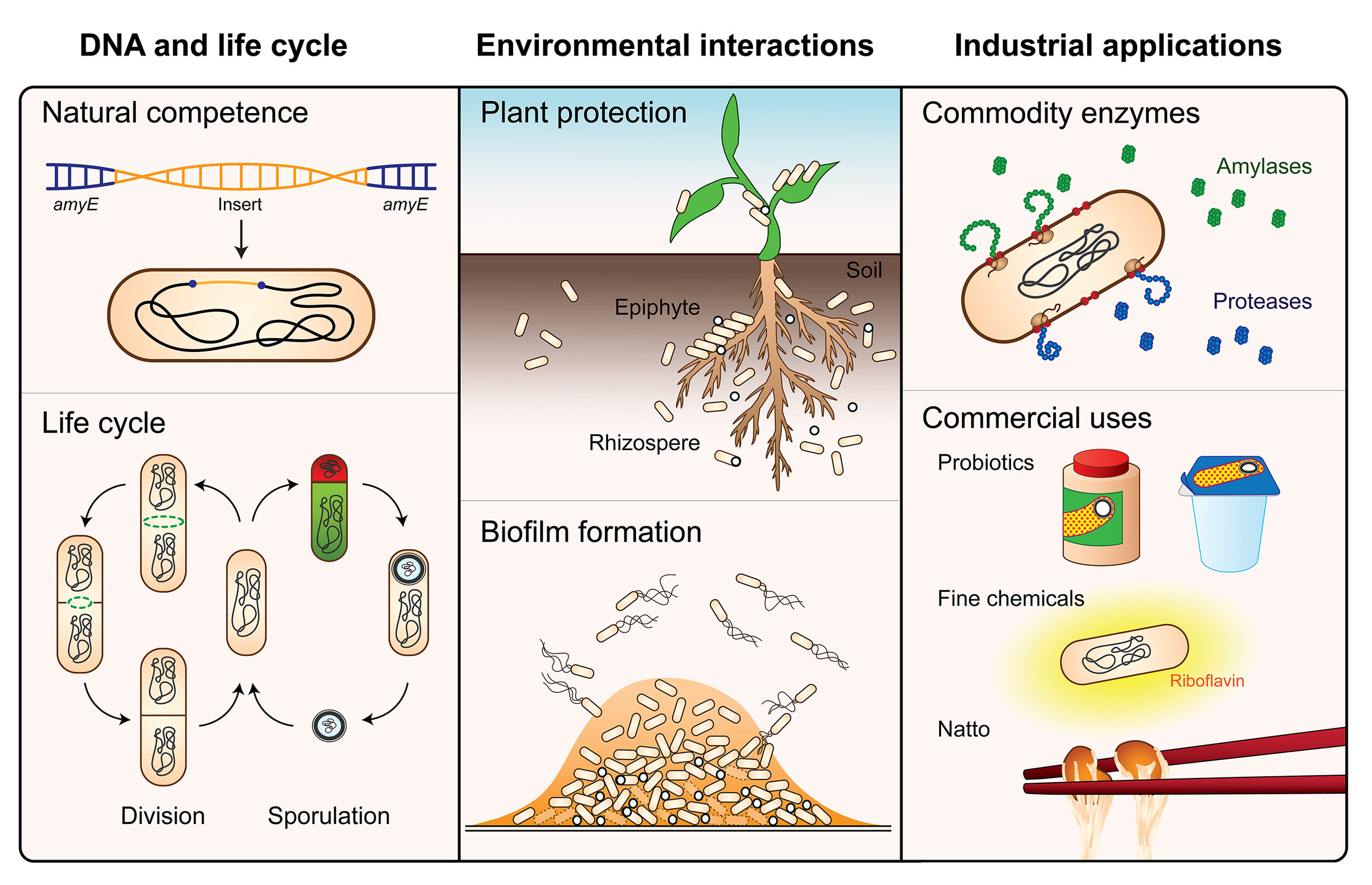Microbe Profile: Bacillus subtilis
Graphical abstract accompanying: “Microbe Profile: Bacillus subtilis: model organism for cellular development, and industrial workhorse” Jeff Errington and Lizah van der Aart (2020) Microbiology

Life cycle, environmental importance and industrial applications of B. subtilis. DNA and life cycle: the laboratory strain of B. subtilis is naturally transformable and, in the typical example illustrated, a foreign DNA segment ‘insert’ is integrated into the amyE genetic locus by double crossover homologus recombination. A crucial facet of the life cycle of most B. subtilis and most Firmicutes is their ability to switch from a classical binary fission, with equal segregation of sister chromosomes,to endospore formation. The resultant asymmetrical division generates small prespore (red) and larger mother-cell (green) compartments with different patterns of transcription. The tough endospore that results can remain dormant for a long period of time before germinating to resume vegetative growth. Environmental interactions: B. subtilis is typically found in association with plants as both an epiphyte and also within the rhizosphere. In some parts of the world batches of spores are used extensively for plant protection in the form of a seed dressing. B. subtilis has also been studied extensively as a model system for biofilm formation, switching classically between planktonic and sessile states. Industrial applications: B. subtilis and closely related organisms are responsible for huge levels of production of hydrolytic commodity enzymes, particularly proteases and amylases. They are also popular in probiotic formulations and can be engineered for production of fine chemicals, such as the vitamin, riboflavin. Finally, B. subtilis is eaten in large quantities, in the far east, in the form of natto, a fermented soy bean curd.